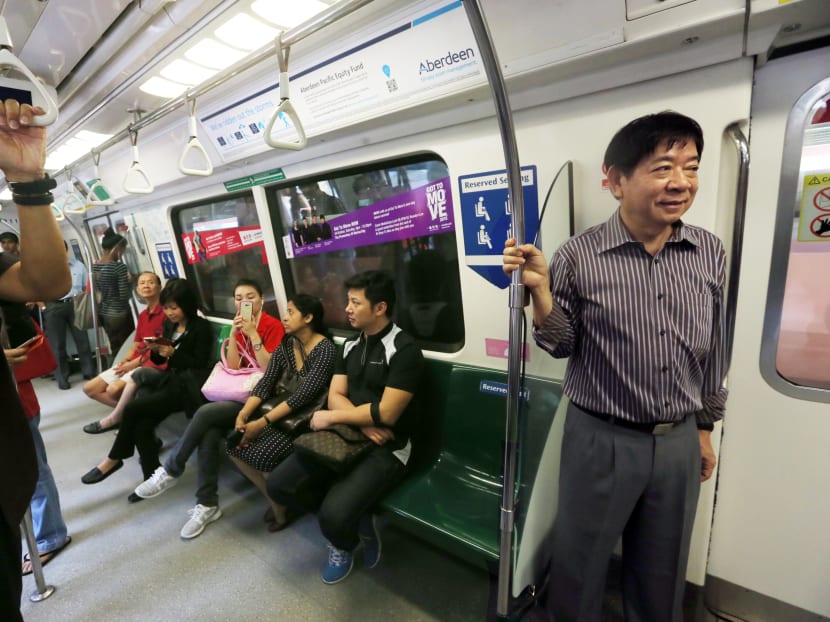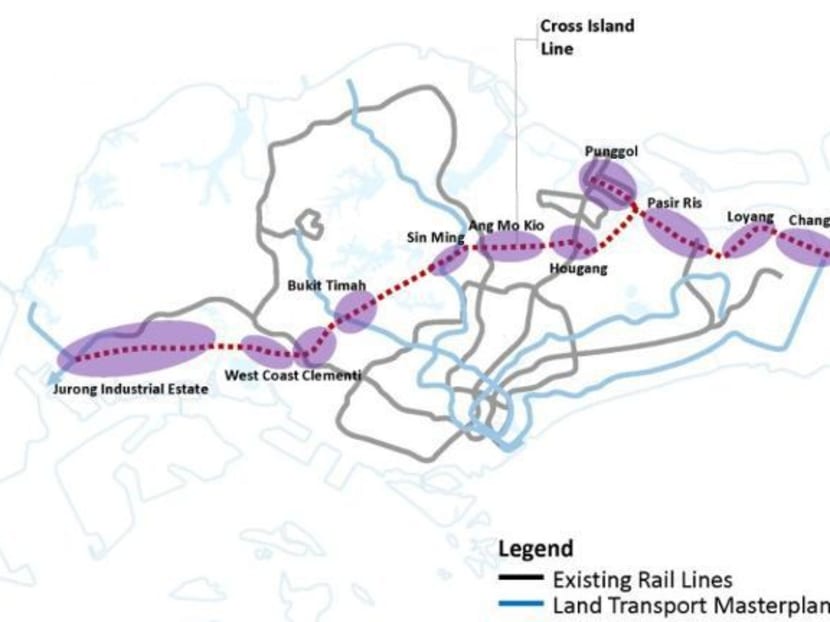Cross Island Line a key node, so keep open mind: Khaw
SINGAPORE — When completed around 2030, the 50-km Cross Island Line (CRL) — whose alignment is at the centre of a spirited public debate — will be a key part of Singapore’s MRT network, running through housing estates such as Pasir Ris, Hougang, Ang Mo Kio, Clementi and West Coast.


SINGAPORE — When completed around 2030, the 50-km Cross Island Line (CRL) — whose alignment is at the centre of a spirited public debate — will be a key part of Singapore’s MRT network, running through housing estates such as Pasir Ris, Hougang, Ang Mo Kio, Clementi and West Coast.
Almost half of the CRL’s 30 stations will serve as interchanges and commuters will make at least 600,000 trips daily on the line, based on preliminary estimates, revealed Transport Minister Khaw Boon Wan in Parliament on Monday (Feb 29).
Describing the CRL as a “massive project”, he called on Singaporeans to keep “an open mind” and “go with facts”, as the authorities mull over a host of factors — including financial viability and technical feasibility — before deciding on the entire alignment. The process may take two more years, said Mr Khaw, who is also the Coordinating Minister for Infrastructure.
Debate over the best alignment option for the CRL and the potential impact on the Central Catchment Nature Reserve reignited after an Environmental Impact Assessment (EIA) EIA report was released last month.
Nee Soon GRC Member of Parliament Louis Ng tabled a question in Parliament, asking Mr Khaw what main factors are taken into consideration when deciding whether the CRL would pass under the nature reserve, and whether the Ministry of Transport would consider the alternative alignment along Lornie Road, “which will allow the MRT line to serve more residents and commuters in that vicinity” and protect the nature reserve and primary forest.
In response, Mr Khaw said that, while environmental groups have urged the Land Transport Authority (LTA) to align the line such that it skirts around the nature reserve instead of tunnelling under it, both the direct and skirting alignment options will have to be carefully considered.
The Government will take into account factors such as impact on commuting time.
The longer 9km route around the nature reserve would incur an extra travel time of six minutes over the more direct 4km route, which will go under the nature reserve. “I’m not so sure we can just brush aside six minutes just like that. For MRT commuters, (an) extra half a minute is terrible,” said Mr Khaw, who clarified that the extra travel time was longer than the four minutes previously estimated.
On the view that the skirting alignment could serve more residents, Mr Khaw pointed out that the area would already be served by the Circle Line and the upcoming Thomson-East Coast Line. “As the alignments can have a different impact on the environment, commuters, taxpayers, businesses and home owners, the Government has a responsibility to study both options thoroughly,” he said.
Noting that the capacity and usage of the CRL will be higher than the North East Line, Mr Khaw added that the new line — which will connect to other lines — will significantly enhance the resilience of the MRT network by providing commuters with “many more routing options”.
“There are many questions that remain unanswered. So what I urge of Singaporeans is this — keep an open mind, go with the facts … and look for the evidence,” he said.
Last week, TODAY reported that following the unprecedented release online of the Cross Island Line Phase One EIA, government agencies will consider doing the same for future reports, especially if there is significant public interest involved.
Speaking in Parliament on Monday, Senior Minister of State (National Development and Home Affairs) Desmond Lee reiterated how the LTA involved the nature groups in the process from the start, after they had raised concerns about the potential serious environmental impact that the CRL may have on the nature reserve. Over more than two years, the LTA consulted the nature groups extensively in preparing for Phase 1 of the EIA, Mr Lee said.
While LTA’s EIA consultant has rated the sensitivity of the nature reserve as “high”, the impact due to the site investigation was “small” due to the adoption of stringent mitigating measures proposed. These include reducing the number of boreholes to be drilled from 72 to 16, and limiting a geophysical survey to a 100m-wide corridor and away from sensitive locations such as streams, swamps and dense vegetation. National Parks Board officers will also be on site to supervise surveyors to minimise damage from trampling on plants, Mr Lee added.
CLARIFICATION: In an earlier version of this article, it was reported that most of the CRL's 30 stations will be serving as interchanges. The Ministry of Transport has clarified that the number of stations to serve as interchanges is almost half.






